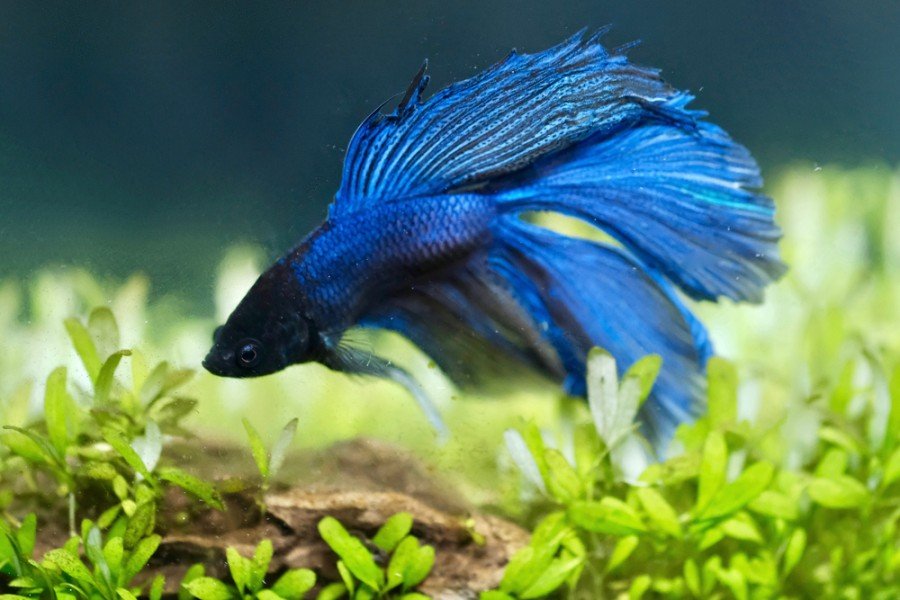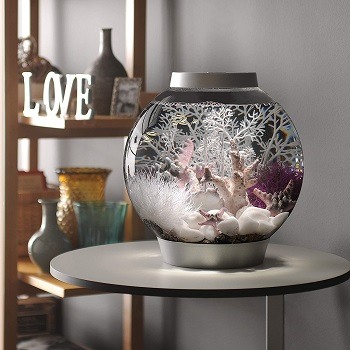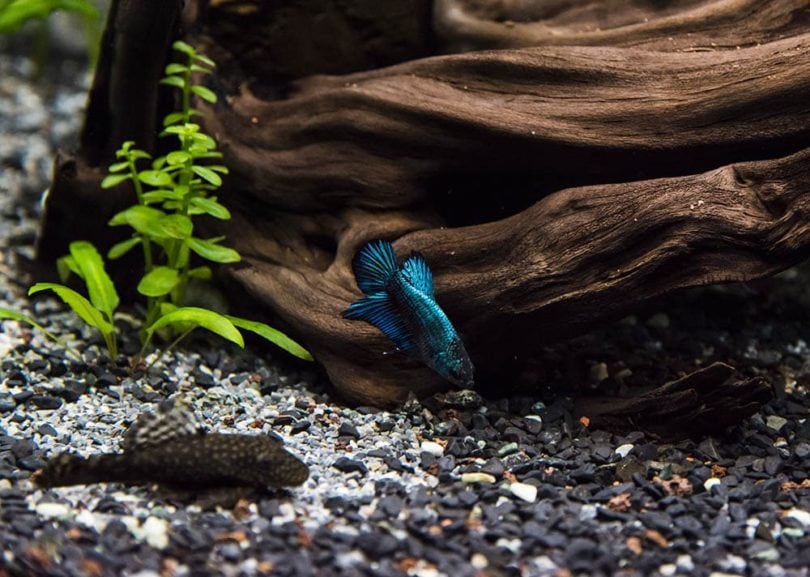Pink Betta Fish: Care Guide, Pictures, Varieties, Lifespan & More

Updated on
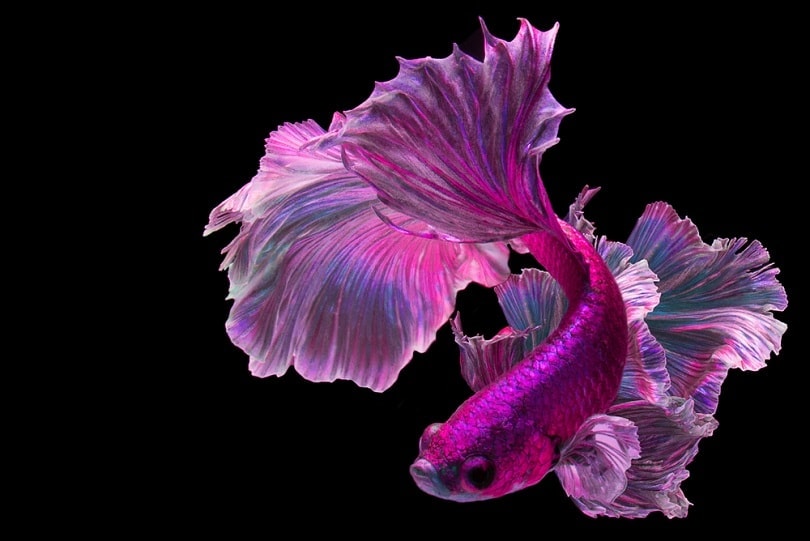
Click to Skip Ahead
Even though Betta Fish are some of the most popular fish to own as pets, not everyone knows how to properly care for them. As a result, many Betta Fish only live to be 2 or 3 years old in captivity when they can live to be 10 years old.
If you are thinking about getting a Betta Fish as a pet, it’s imperative that you learn how to care for it properly. This guide will help you learn the basics of Pink Betta Fish ownership so your Betta Fish can live a long and happy life.
Quick Facts about Pink Betta Fish
| Species Name: | Betta splendens |
| Family: | Gourami |
| Care Level: | Intermediate |
| Temperature: | 76–81 degrees Fahrenheit |
| Temperament: | Aggressive |
| Color Form: | Pink |
| Lifespan: | 2–3 years on average due to improper care; 10 years with proper care |
| Size: | 2.4–3.1 inches |
| Diet: | Betta pellets |
| Minimum Tank Size: | 2.5 gallons |
| Tank Set-Up: | Live plants; lid |
| Compatibility: | Not suitable as tankmates |
Pink Betta Fish Overview
Betta Fish are tropical fish that live in the shallow waters of Asia. The Pink Betta Fish have been specifically bred for their beautiful pink colors and morphs, though there are dozens of other Betta Fish colors that are beautiful as well. It is specifically the male Betta Fish that are known for their beautiful fins.
Often, these fish are selected as a starter fish because they can be easily purchased at pet stores. Even though they are easy to find, Betta Fish are actually very difficult to care for properly.
Some individuals fail to care for their Betta Fish the way they ought to be. Many individuals keep Betta Fish in a small bowl, but they require a large tank with tropical temperatures. Since Betta Fish are sometimes not cared for properly, most only live to be 2 or 3 years old, when they can live to be 10.
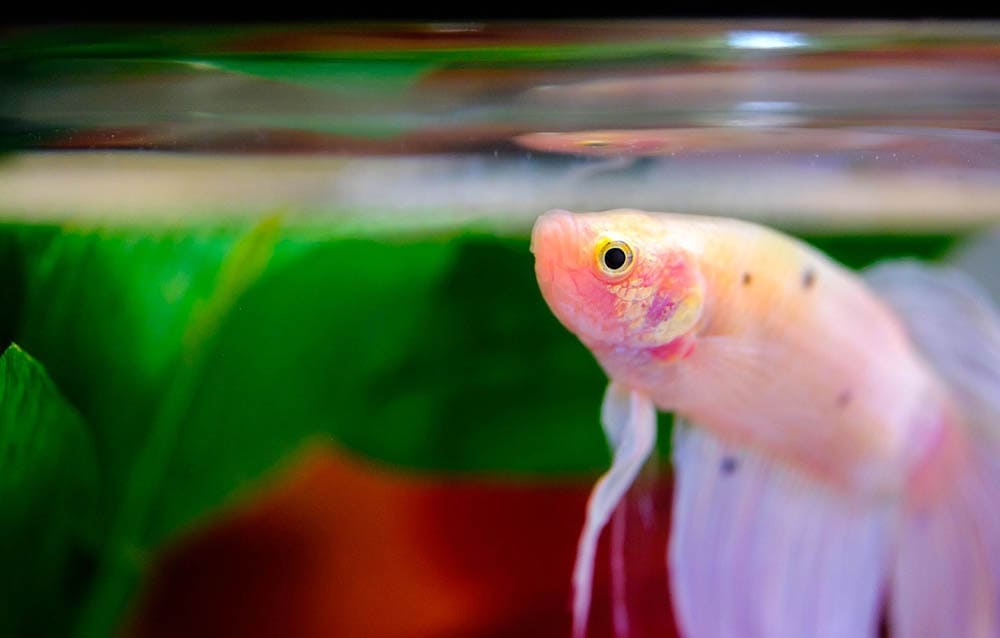
How Much Do Pink Betta Fish Cost?
Because of how common Betta Fish are, they are one of the most affordable fish you can find at the pet store. The exact cost of a Betta Fish will depend on its color or morph. Pink Betta Fish tend to be slightly more expensive because they are beautiful.
You should pay anywhere from $20 to $30 for a Pink Betta Fish. On average, they are $25, but the exact price will depend on whether you get a male or female fish and where you purchase it from.
Typical Behavior & Temperament
It’s common knowledge that Betta Fish are considered aggressive. Certain morphs are more aggressive than others, and males tend to be more aggressive than females. It’s important never to instigate their aggressive behavior so that all fish remain safe.
Male Betta Fish need to be housed by themselves or with females if breeding. Never put two males in a tank by themselves. Likewise, you will not want to put a male Betta Fish with other fish types.
Females are less aggressive. It is perfectly fine to only have one female Betta Fish. If you want more than one, we recommend getting five females together. They tend to be less aggressive to one another in groups of five or so.
In addition to aggression, Betta Fish are highly intelligent. They require a lot of space to swim around. Even though Betta Fish like to hang out in waters with a lot of foliage, they are also jumpers.
Appearance & Varieties
Pink Betta Fish are considered some of the most spectacular colors and morphs. The males have beautiful pink fins that can range from light pink to hot pink. Some Pink Betta Fish will also have different shades of pink on their body at the same time.
Like all other Betta Fish, Pink Betta Fish have spectacular fins that make the fish look about two times larger than it actually is. The fins look like delicate flowers.
Because of how beautiful the Pink Betta Fish is, they are more expensive than other Betta Fish types. Likewise, it is a bit more difficult to find at stores, but it isn’t necessarily rare.
If you are having trouble finding a Pink Betta Fish specifically, you should be able to find other colors at other pet stores. Some of the most popular Betta Fish include the Blue Betta, Mustard Betta, and the Bicolored Betta.
How to Take Care of Pink Betta Fish
Unfortunately, many individuals get a Betta Fish and think that the fish only needs a small bowl. This could not be further from the truth. Betta Fish need a lot of space and proper care so that they live their maximum life expectancy.
If you just toss a Betta Fish in a fishbowl, it will probably only live to be 2 or 3 years old. Even though this is the average life expectancy of domesticated fish, this is way shorter than they should live.
It’s most important that you provide your Betta Fish with the right conditions. Here is how to properly care for a Pink Betta Fish so that it lives a long and healthy life.
Habitat, Tank Conditions & Setup
In the wild, Betta Fish live in shallow water that is oxygen deficient. For example, they often live in rice patties, mud, and streams. Although the water is shallow, it has expansive water volume.
Tank Size
At the very minimum, a singular Pink Betta Fish needs a tank that is 2.5 gallons large. Although 2.5 gallons is the accepted minimum, it is better to have 5.0 gallons or more. This will provide the Pink Betta a lot more space, and it will make it easier for you to care for the Betta.
Whenever you select a very small tank, you will have to clean it more often. As a result, 2.5-gallon tanks are large enough for most Betta Fish, but most individuals do not care for the water correctly, allowing the fish to get sick and die.
So, get a tank that is 5 gallons or more. You will be able to maintain the temperature and nitrogen cycles a lot easier.
Once you pick out a tank, do not fill it all the way up. Betta Fish have unique organs that require them to gulp air at the water surface. Because of this fact, Betta Fish can’t get close to the edge and accidentally jump out of the tank. To avoid this from happening, don’t fill the tank up all the way and add a lid over the top.
Water Quality & Conditions
What most individuals get wrong about better fish ownership is the water quality and conditions. Most individuals leave the Betta Fish tank in room temperatures, which is well below the ideal water temperature for Betta Fish.
Betta Fish are tropical fish, which means their water should be between 76–81 degrees Fahrenheit with a pH range of 6.5 to 7.5. Ideally, you want the ammonia to be 0 and nitrate within 40 PPM. Nitrite should be 0 PM.
To ensure that the water is the right temperature and conditions for your Betta Fish, make sure to use a thermometer, test strips for monitoring the water parameters, and conditioner and dechlorinator for the water.
Substrate
Betta Fish don’t have as extensive needs when it comes to substrate. Because Betta Fish don’t often go to the bottom of the tank to begin with, the substrate doesn’t matter much. We recommend larger pebbles just to ensure the fish doesn’t accidentally swallow sand or other dangerous materials.
Plants
Betta Fish require plants and hiding areas to feel safe. In the wild, Betta Fish are found within rice patties and other waters dense with plants. Whenever stressed or sleeping, the Betta Fish can go within the plants to reduce stress.
It’s best to add live plants to the water. It adds cleaning benefits so that you don’t have to clean out the tank as frequently. If you need to get artificial plans, make sure they are silk. Sharp plastic plants can injure the Betta Fish’s sensitive fins. Likewise, avoid using hides or decorations in the tank that have sharp edges.
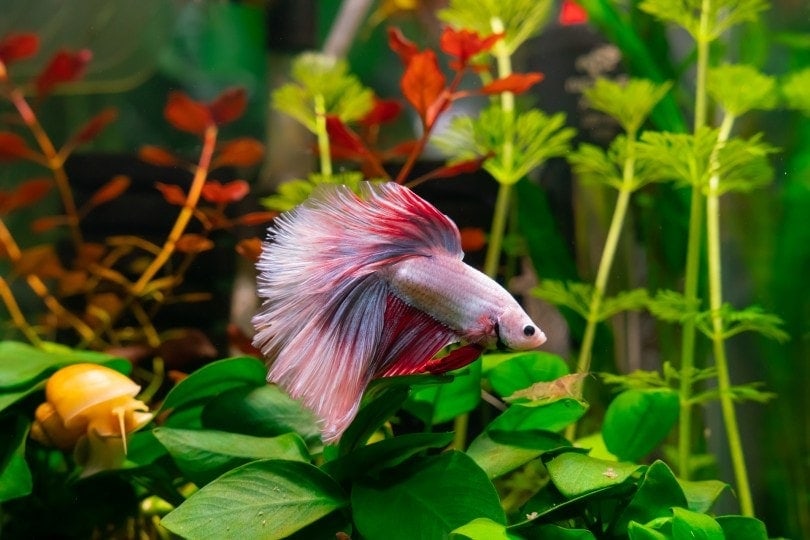
Lighting
Betta Fish need access to the natural day and night cycle. Just like us, Betta Fish will sleep whenever it is dark because their internal biological clock programs them to sleep at night. Allow the Betta Fish to have access to natural light, but don’t place their tank right next to a window. This can increase the water temperature to dangerous levels.
Since you will need to place the tank away from the windows, artificial lighting is often recommended. This will allow you to control when the fish has access to light without increasing the temperatures.
Of course, you might not need to do this if your Betta Fish is placed in such a way that they get access to natural light without increasing their temperatures.
Filtration
Filters are not necessary for Betta Fish, but they can make it much easier to keep the water conditions correct. If you have a tank over 3 gallons, a filter will certainly help caring for the tank.
If you select a filter, it’s imperative that you select one specifically designed for Betta Fish. Betta Fish are not strong swimmers, and many filters will disrupt the Betta Fish’s swimming with the strong currents.
Are Pink Betta Fish Good Tank Mates?
Pink Betta Fish do not make good tank mates. Instead, you should keep Betta Fish by themselves. Male Betta Fish especially need to be kept alone because they are territorial and aggressive. The only time a male Betta Fish should be with another is if you are intentionally breeding it with a female.
If you want more than one Betta in your tank, you will need to get a female Pink Betta Fish. Females can live in sororities of five or more, but they won’t be as beautiful as the males.
What to Feed Your Pink Betta Fish
Feeding Betta Fish is not too difficult. You can find specialty Betta Fish food at practically any store that sells fish food. Feed two to four pellets to the Betta Fish once a day. Do not give your Betta Fish other tropical fish food. Only select Betta-specific food because they have a unique protein requirement.
Keeping Your Pink Betta Fish Healthy
The key to keeping your Betta Fish healthy is to provide it with the correct conditions and clean the tank when needed. If you have a non-filtered tank, you will likely need to change out 100% of its water every single week. It’s a good idea to try water cycling so that the water quality does not decline rapidly.
Make sure to clean the interior of the tank and the decorations completely. Don’t use soap because this can harm the fish once reintroduced. You can use regular bleach, hot water, white vinegar, and a cleaning wand to get this job done.
Breeding
Breeding Betta Fish can be tricky since they are aggressive. You will want to introduce the male and female in a neutral tank. Never put the female inside the male’s tank because the male will attack the female. Don’t add any substrate in the tank and allow the males to watch over the eggs because they are great fathers.
Are Pink Betta Fish Suitable for Your Aquarium?
As you can see, Betta Fish need a lot more care and concern than they are traditionally given. They require a large tank with specific water conditions. If you are prepared to give the Betta Fish the attention it deserves, it can be a gorgeous addition to your home.
Something else to keep in mind is that Pink Betta Fish are not suitable for your aquarium if the aquarium already has other fish. Because Betta Fish are carnivorous and aggressive, it can be deadly for other fish involved.
See also:
- Betta Fish Fin Rot: Vet-Approved Causes, Signs, Treatment & Prevention Tips
- Is Your Betta Fish is Dying of Old Age? 12 Vet-Reviewed Signs
Featured Image Credit: BannokStockPhoto, Shutterstock

